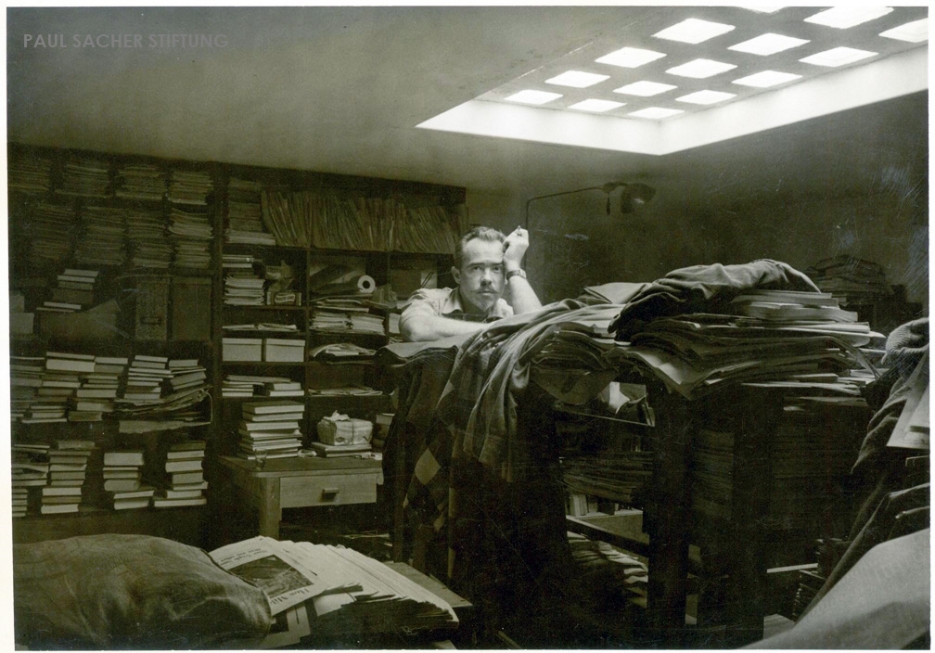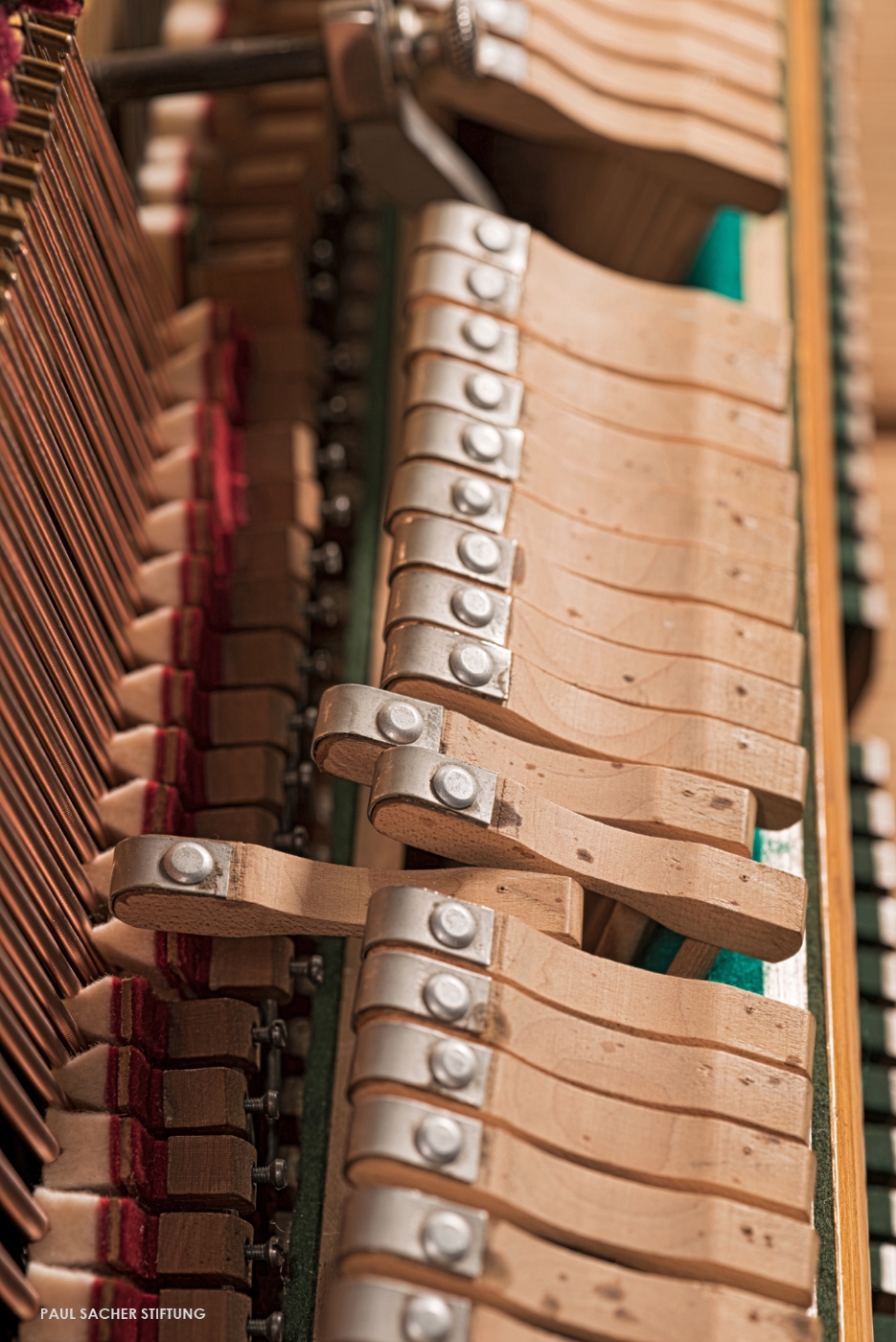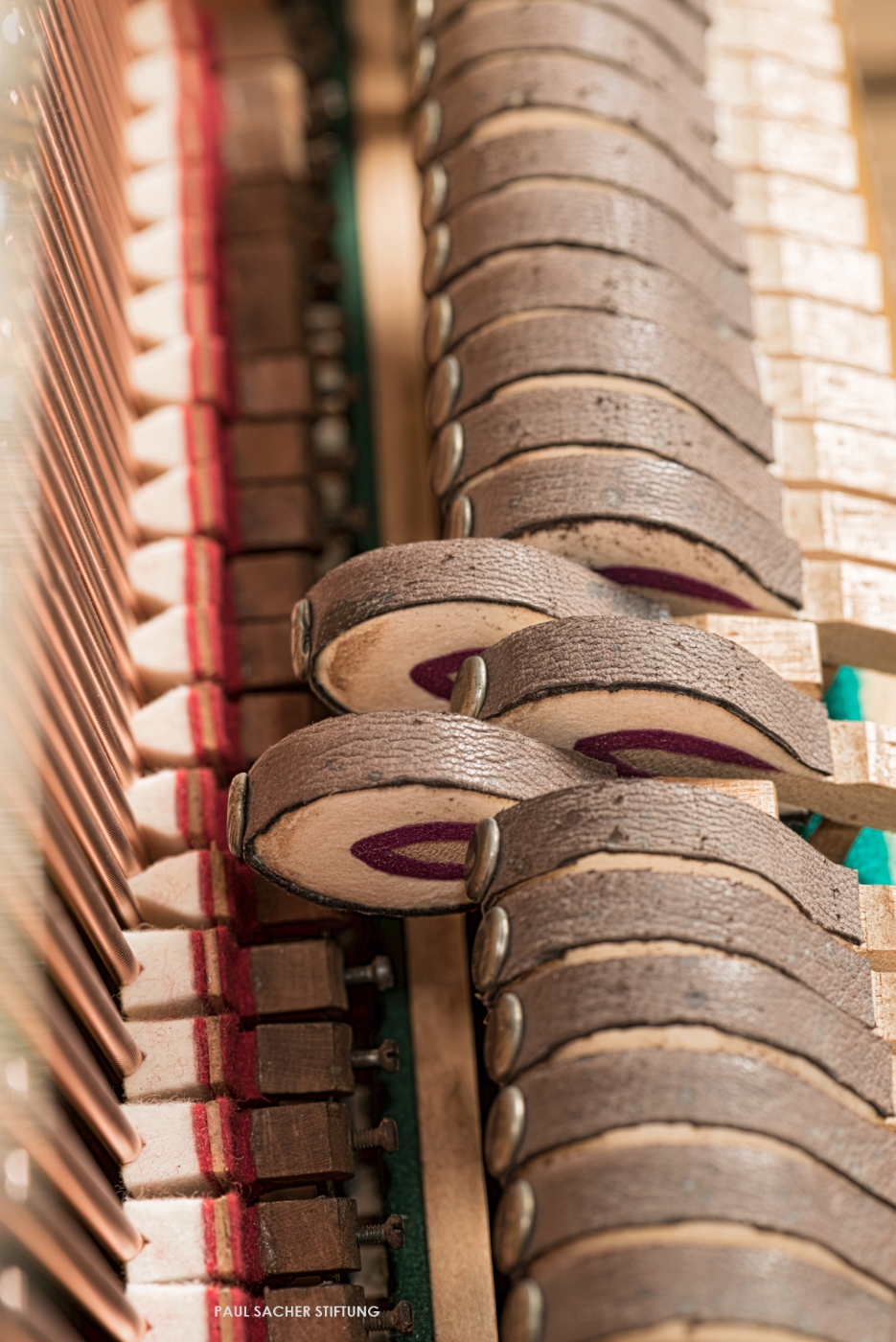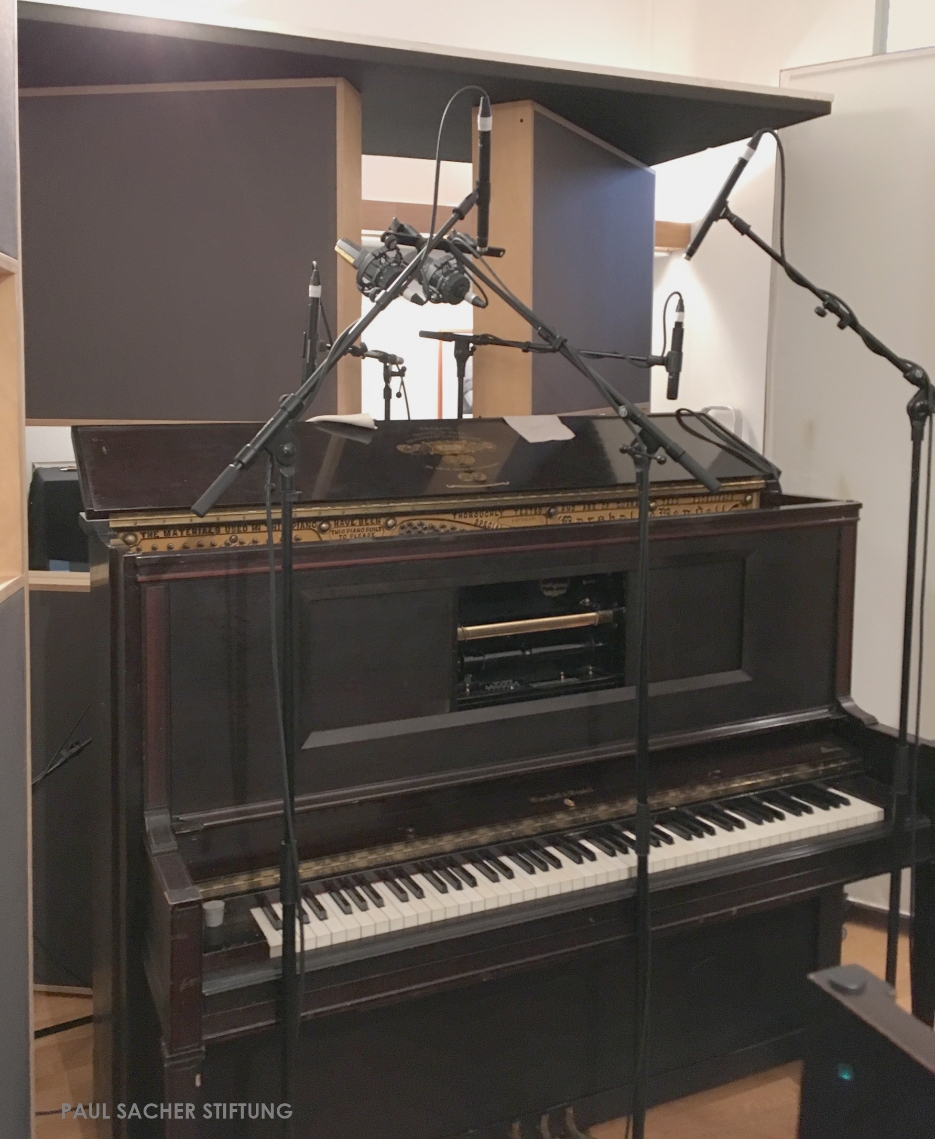Conlon Nancarrow's STUDIES FOR PLAYER PIANO: Towards a Critical Edition
Project Description | Identification of Documents | Acoustic Documentation of the Player Pianos | Nancarrow Sampler | MIDI Files of the Rolls | Music Engraving and Technical Tools | Critical Edition of Selected Works | Online Resources | Research Team and Contact
Acoustic Documentation of the Player Pianos
"I’ve had an obsession with the player piano from way back, for many reasons. But after I got into it, it began developing, and my own experience with it changed all kinds of perspectives."
(Conlon Nancarrow)
Nancarrow began working with the player piano as a composer in the late 1940s. His adoption of this unusual medium resulted from a combination of internal motivations and external circumstances. An important impulse came from Henry Cowell’s treatise New Musical Resources (1930), where the player piano is suggested as a potential vehicle for the realization of complex rhythms. The mechanical instrument was indeed well suited for the polyrhythmic and polytemporal procedures already evident in Nancarrow’s earlier, jazz-influenced music. It also assured independence from performers, who had created nothing but discouraging experiences for the composer.
Nancarrow experimented intensively with his instruments throughout the 1950s, learning how fast they could repeat a note or how many notes they could hold down at one time. As the composer’s oeuvre grew, the music became increasingly idiomatic and tied to the medium.
Although Nancarrow owned several instruments over the years, he wrote most of his compositions for two Marshall & Wendell upright pianos equipped with Ampico (American Piano Company) reproducing mechanisms, model A (1920).
After several failed attempts to prepare them, either with a mandolin attachment or by placing objects in between the strings to achieve a variety of timbres, in a fashion similar to John Cage – whose Sonatas and Interludes for prepared piano he had heard in a private performance in New York City in 1947 – Nancarrow decided to modify the instruments permanently. One piano has bare hardwood hammers with steel straps fixed over them [Ex. 1a] and the other possesses hardened felt hammers covered with leather and topped with small metallic pieces [Ex. 1b]. Seeking to capture the polyphonic clarity of the harpsichord, he also added dampers in the high register of both instruments.
The resulting sound undoubtedly influenced the composer’s practice, both technically and aesthetically. Both player pianos are preserved at the Paul Sacher Foundation. An illustrated summary of the instruments’ components and operational principles (Bugallo, 2004–2021) will be available under Online Resources.
The Recordings
In a repertoire where musical conception and means of realization – in this case reproduction as opposed to performance – are so intimately interwoven, all the extant recordings possess special value as objects of study. A complete Nancarrow discography (Meyer, 2020), including original works as well as arrangements, is available under Online Resources.
Several commercial releases document the realization of Nancarrow’s music on his pianos. The Columbia (1969) and New World (1976) records were the first to appear, followed by a series of four LPs brought out by 1750 Arch Records between 1977 and 1984 (remastered and released as a multiple CD box by Other Minds in 2008). The latter collection, which features almost all the catalogued Studies for Player Piano up to Study No. 41, played a decisive role in the dissemination of Nancarrow’s work and was an important trigger for the wave of international recognition that arose in the 1980s. The German label Wergo followed with the production of five compact discs, released between 1989 and 1991. Additional documentary recordings appeared on the Other Minds label in 2000.
The recordings made under the composer’s supervision evidence not only the sound of the original instruments but also his chosen tempos, which are not necessarily in accordance with those indicated in the scores. Tempo discrepancies can also be observed between different recordings of the same piece [Ex. 2]. Tempo variants among different sources are considered and commented on in the critical edition.
Ex. 2a: Conlon Nancarrow, Study No. 4, WERGO (1989) excerpt, metal hammers.
Ex. 2b: Conlon Nancarrow, Study No. 4, 1790 Arch Records (1977) excerpt, leather hammers.
In 2005 and 2007, the Paul Sacher Foundation, the Westdeutscher Rundfunk in Cologne, and the Musik-Akademie in Basel collaborated to produce new recordings on the composer’s original instruments. These recordings document primarily posthumously discovered materials from the Nancarrow estate and were released by Wergo in 2007, 2011, and 2012. Unpublished material from these sessions allows further comparison of the two player pianos, recorded in the same acoustic space [Ex. 3].
Ex. 3a: Conlon Nancarrow, For Ligeti (1988), recorded at the Musik-Akademie Basel, Kleiner Saal (2005) excerpt, metal hammers.
Ex. 3b: Conlon Nancarrow, For Ligeti (1988), recorded at the Musik-Akademie Basel, Kleiner Saal (2005) excerpt, leather hammers.
The Conlon Nancarrow Collection at the Paul Sacher Foundation also contains approximately 54 hours of unpublished recorded material, made in the composer’s studio in Mexico City over the years and with diverse purposes. Originally stored in open-reel tape, these recordings have been digitized by the Foundation. These sound documents are of special value, particularly with regard to tracing potential alternative versions of the works [Ex. 4].
Ex. 4: Conlon Nancarrow, Study No. 4, documentary recording of early version (PSS), excerpt.
Audio Database and Sampling
One of the purposes of the present project was to carry out the first scientific acoustic documentation of Nancarrow’s original instruments. Following extensive planning and several tests, the documentation was carried out by Cedric Spindler and Helena Bugallo at the Paul Sacher Foundation in the early months of 2018. The room where the instruments are currently placed was outfitted with acoustic panels for the multichannel recording [Ex. 5].
The sessions had two main purposes:
- To create a digital audio database containing all the notes of each instrument, triggered by a player-piano roll, in the seven possible dynamic levels, with and without the una corda pedal.
- To sample the instruments in order to pursue the construction of a virtual player piano – the “Nancarrow Sampler” – to be utilized as a research tool and in the context of the Critical Edition (in preparation).
The goals, methodologies, results, and potential applications of this aspect of the project are discussed in the article "Lay It as It Plays: On the Acoustic Documentation and Sampling of Conlon Nancarrow’s Player Pianos" (Bugallo, 2021).
The outcome of the recordings and the related metadata are archived at the Paul Sacher Foundation. This material makes possible the digital acoustic mapping of the player pianos – as they were in 2018 – and the evaluation and comparison of their qualities. The documentation also included the recording of a few pieces, not only to capture the instruments at work but also as testimony to the external conditions of the sessions (room and microphones). These recordings, which are archived in eight channels as well as in a stereo mix, present a further opportunity to compare both instruments side by side [Exx. 6 and 7].
Ex. 6a: Conlon Nancarrow, Study No. 15, PSS recording (2018) excerpt, metal hammers.
Ex. 6b: Conlon Nancarrow, Study No. 15, PSS recording (2018) excerpt, leather hammers.
Ex. 7a: Conlon Nancarrow, Study No. 49a, PSS recording (2018) excerpt, metal hammers.
Ex. 7b: Conlon Nancarrow, Study No. 49a, PSS recording (2018) excerpt, leather hammers.
Further information related to the acoustic documentation of the player pianos is provided under Nancarrow Sampler and MIDI files of the Rolls.



